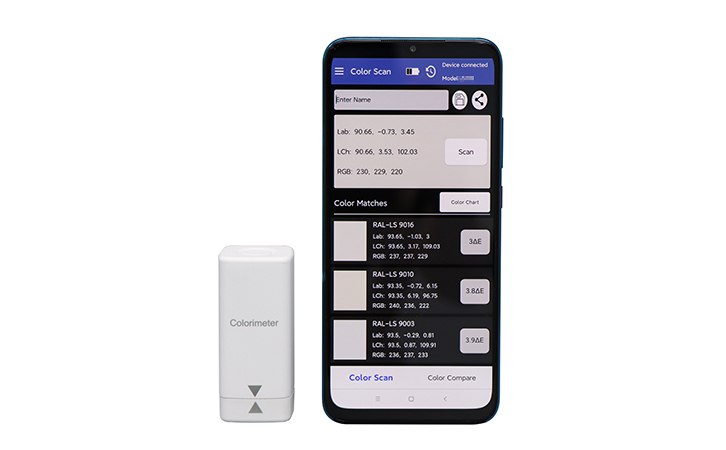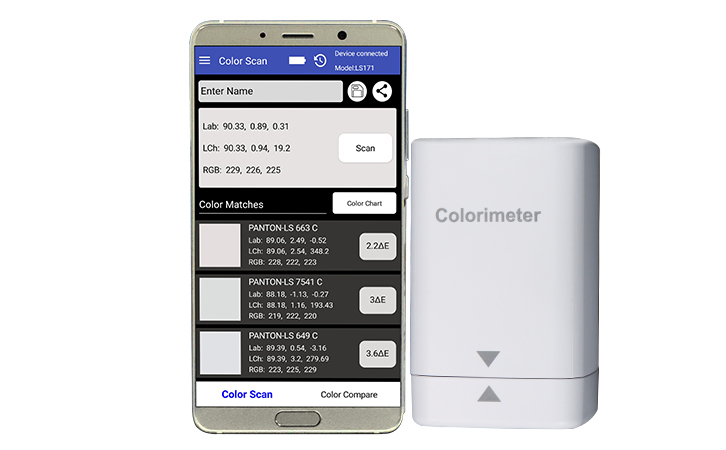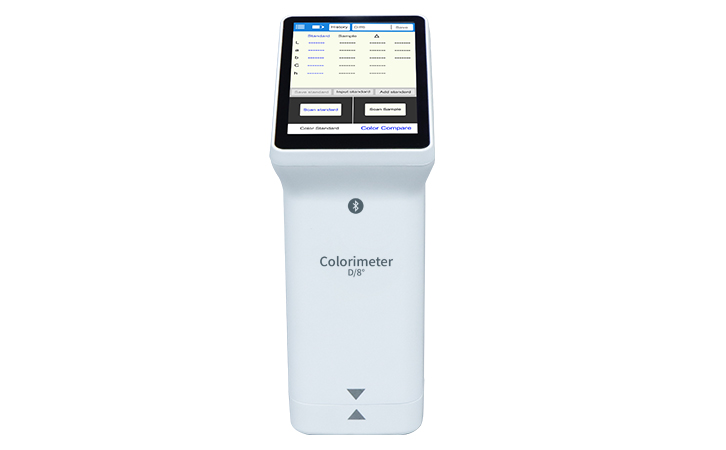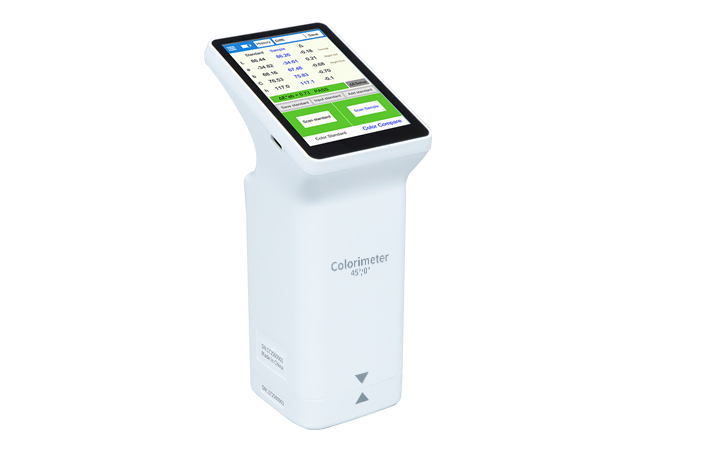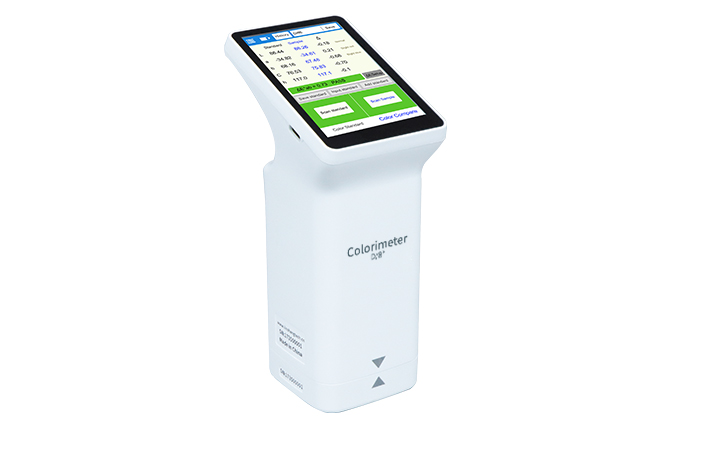Portable Colorimeter Selection and FAQ
Colorimeter (also named color difference meter) is widely used in paint, coatings, ink printing, packaging materials, leather fabrics, textiles, plastics and other industries. This article shows you how to choose a target colorimeter from the aspects of parameters, prices, application, principles and frequently asked questions. Our colorimeters contains 7 different models, which are divided into pocket colorimeters and handheld colorimeters. Among them, some are pocket colorimeters, the others are handheld colorimeters.
Colorimeter Features and Application
Need to be operated with mobile APP
Mainly used in printing and packaging industries
Need to be operated with mobile APP
Widely used in various industries
Touch screen, can also connect to APP
Mainly used in printing and packaging industries
Touch screen, can also connect to APP
Widely used in various industries
Touch screen, no Bluetooth transmission
Mainly used in printing and packaging industries
Touch screen, no Bluetooth transmission
Widely used in various industries
Colorimeter Parameter Comparison
| Model | 86170 | 86172 | 86172B | 86171 | 86173 | 86173B |
|---|---|---|---|---|---|---|
| Illumination geometry | 45/0 (45° annular illumination, 0° viewing angle) | D/8, specular component include (SCI) | ||||
| Application | Printing, packaging materials, etc. | General colorimeter for plastic, paint, metal, ceramic, etc. | ||||
| Measuring aperture | 8mm | 8mm | ||||
| Operation Interface | APP | Touch Screen | Touch Screen APP, PC software | APP | Touch Screen | Touch Screen APP, PC software |
| Repeatability | Standard deviation ΔE*ab is ≤ 0.03 (Measurement condition: the average value of 30 measurements on the whiteboard at an interval of 3s after calibration) | |||||
| Color space | CIE Lab, Luv, LCh, Yxy, CMYK, RGB, Hex | |||||
| Color difference formula | ΔE*ab, ΔE*uv, ΔE*94, ΔE*cmc(2:1), ΔE*cmc(1:1), ΔE*00 | |||||
| Measurement conditions | Light source D65 field of view 10° | |||||
| Illumination light source | Full spectrum LED light source | |||||
Frequently Asked Questions
-
1. How accurate are the colorimeters?
The repeatability is an important parameter for the accuracy of the colorimeter. Our colorimeter standard deviation ΔE*ab is within 0.03 (Measurement condition: the average value of 30 measurements on the white board at an interval of 3s after calibration). This repeatability is very excellent among colorimeters at the same price. Each colorimeter can pass the qualified inspection before leaving the factory to ensure it conforms to the standard of China Metrology Institute.
-
2. Does the colorimeter provide a formula for color matching?
Our colorimeters provide a color deviation prompt function according to the Lab value, which can provide a reference for color matching. It can only indicate blacker, whiter, redder, greener, yellower or bluer, but it cannot provide accurate color formulas. Only with the help of a spectrophotometer and professional color matching software can fully realized automated color matching.
-
3. D/8°and 45°/0°, which one is recommended?
D/8°and 45°/0°are two kinds of illumination geometry with different optical geometry design. D/8°illumination geometry is more widely used for the color comparison and measurement of high-gloss materials; 45°/0°illumination geometry is mainly used in printing and packaging industries.
-
4. Can the colorimeter measure light-transmitting materials (such as colored glass and film)?
Since part of the light will pass through the light-transmitting materials, the colorimeter is not suitable for color measurement of such kinds of materials; however, when place a pure color material with uniform texture under the light-transmitting material, we can measure the color difference between the standard and the sample.
-
5. Can the colorimeter measure powder and liquid?
Opaque liquids and powders can be put into a cuvette for color measurement.
